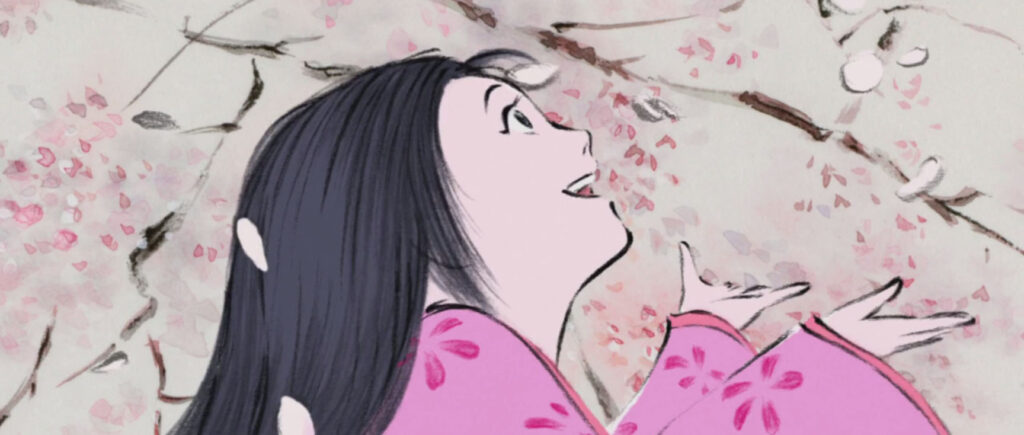Netflix made some of the most beautiful films from Japanese animation studio Ghibli available in February. In addition to well-known classics such as “My Neighbor Totoro” and “Spirited Away”, there are also some lesser-known films to watch. One of these films is “The Legend of Princess Kaguya” by Isao Takahata from 2013.
Takahata founded the studio in 1985 together with Hayao Miyazaki and directed among many other works the film “Grave of the Fireflies” (1988) and the animated series “Heidi” (1974), with which many children grew up in Germany. In “Princess Kaguya” he devotes himself to the oldest traditional fairy tale in Japanese history: “Kaguya-hime no Monogatari”, which tells the story of a childless bamboo collector who one day finds a tiny girl in a shining bamboo prose that he takes care for with his wife. They consider the girl a heavenly gift, call her “princess” and raise her like her own child.
The girl’s carefree childhood, her attachment to nature, the rules of the adult world, social expectations of a young woman and what it means to live in this world are themes explored in the story. The film enchants with its hand-painted figures, landscapes and expressive lighting moods with its very own visual style of pencil, ink and watercolour colours. In an impressive way, movements of a baby, children playing, animals and fabrics are lovingly animated. Many famous Japanese actors give the characters their voices and it is worth watching the film in the original Japanese version with subtitles.
“The Tale of Princess Kaguya” was Isao Takahata’s last film before he died in 2018 and he demands some patience from the audience as he unfolds his scenes quite slowly, calmly and in detail. But those who take their time will be rewarded with an excellent final work of this old master and here and there it may put some into their own childhood and remind them of dark fir trees and green meadows in the sunshine.
